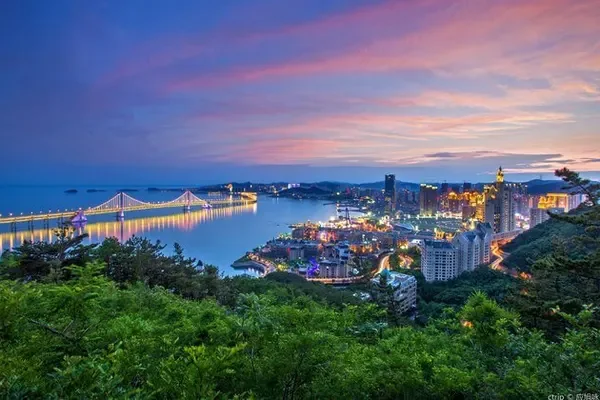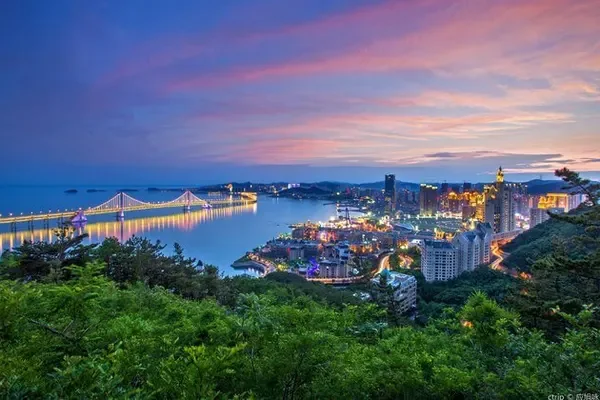Liupan Mountain is the birthplace of the Jing River and the secondary birthplace of the Wei River. Human ancestors Shennong, Huangdi, and Queen Mother all lived in this area. More than 300 ancient human sites have been excavated, and it is one of the important birthplaces of the Chinese nation.
Liupan Mountain is the combination of the farming culture of the Central Plains and the nomadic culture of the north. It is a necessary place for the northern route in the eastern section of the ancient Silk Road, and it is also a military fortress that military strategists of all dynasties must fight for. In the second year of Qin Shihuang's unification of China, that is, in 220 BC, he toured the west and north of Longxi with a 39-year-old heroism, went out of Jitou Road, and passed through Huizhong Palace; Emperor Wu of the Han Dynasty went to Liupan Mountain six times in 24 years; It is to set up the military base camp in Liupan Mountain, and its descendants Mengge Khan, Kublai Khan who destroyed the Southern Song Dynasty, Dali, and Yefan mostly set out from Liupan Mountain and took Liupan Mountain as their base camp.
The Guyuan area is a must pass through the northern part of the eastern section of the ancient Silk Road. It is an important fortress town where military strategists stationed troops in the past dynasties. The cultural relics have the characteristics of "ancient", "expensive" and "many"; the natural resources gather the essence of eco-tourism resources in Ningxia and even Northwest China, with complete content and high grade; the Hui nationality's unique style of architecture, music, dance and food culture Folk crafts are all distinctive.



Liupanshan National Forest Park is located in the south of Ningxia and borders Gansu, with a total area of 67,800 hectares, almost equidistant from the three provincial capitals of Xi'an, Yinchuan, and Lanzhou. Starting from the above three cities, the journey to the scenic spot is only about 4 hours. With the extension of the expressway, the journey will be shortened.
Liupanshan National Nature Reserve is located at the junction of northern nomadic culture and Central Plains culture, with many cultural relics and rich natural resources. The luxuriant forest, good vegetation and biodiversity make Liupan Mountain an ideal place for leisure, summer vacation, forest exploration, scientific research and popularization of science and teaching practice; there are Laolongtan, Erlong River, Guimenguan, Liangdian Gorge, There are more than 60 scenic spots in the six scenic spots of Lotus Garden and Baiyun Mountain. In the central part of the reserve are the ancient city of Guyuan, the Great Wall of Qin in the Warring States Period, and the ruins of the Anxi Palace. In the north, there is the Danxia Landform Scenic Area centered on the Sumeru Grottoes, which is so beautiful.
Known as a green pearl on the Loess Plateau, Liupanshan National Nature Reserve is an important water conservation forest base in Northwest China and a scenic spot in the autonomous region. It spans the three counties of Jingyuan, Guyuan and Longde, with a forest coverage rate of over 70%. .
Liupan Mountain is one of the youngest mountain ranges in my country. It was formed by the joint action of the Himalayan orogeny and the Blue Mountain Movement. It is located at the junction of the Qinling Mountains and the Longshan Mountains. It has both the majesty of the northern mountains and the beauty of the southern mountains. . Liupan Mountain is rich in animal and plant resources, with 788 species of plant resources, including leopard, leopard cat, forest musk deer, golden pheasant and other national second-class protected animals.
Liupan Mountain has a profound historical and cultural heritage.




Liupan Mountain is the must-pass of the northern part of the eastern section of the ancient Silk Road. It is an important fortress town where military strategists of all dynasties stationed troops and used military force. It is also the combination of northern nomadic culture and Central Plains culture. Ancient multi-ethnic groups lived here. Cultural relics have the characteristics of "ancient", "expensive" and "many".
When Genghis Khan conquered Xixia, he recuperated and rectified his army here, and then died of illness here.
And 97% of the total population of Jingyuan County under Liupan Mountain is Hui, which has accumulated rich Islamic culture and strong Hui customs. In addition, legends and stories with national and local characteristics are widely circulated in the Liupanshan area, such as "Wei Zhengmeng cuts the old dragon of Jinghe River", "Liu Yi's biography", "Story of Ghost Gate" and so on.
Liupan Mountain is the last mountain that Chairman Mao Zedong led the Chinese Workers' and Peasants' Red Army to cross during the Long March. Mao Zedong's "Qingpingle Liupan Mountain" made it famous at home and abroad; The scene of joining forces marks the end of the victory of the Long March; Shanjiaji is the place where Chairman Mao led the Red Army to station and carry out revolutionary work in Hui areas and organize the establishment of the first Hui red regime "Shanjiaji Hui Autonomous Government".















Liupanshan Red Army Long March Memorial Pavilion is located on the top of Liupanshan. In October 1935, the Red Army led by Mao Zedong crossed Liupan Mountain on the Long March, opening the last channel to the revolutionary base in northern Shaanxi. Mao Zedong and others went to Liupanshan and wrote "Qingpingle-Liupanshan" impromptu, which made Liupanshan famous at home and abroad.
In September 1961, at the invitation of the people of Ningxia, Mao Zedong wrote a long scroll and presented the calligraphy to the people of Ningxia, encouraging the people of Ningxia to build Ningxia with the spirit of "If you don't reach the Great Wall, you are not a hero." In 2008, the monk under Liupan Mountain planted a stone tablet with Mao Zedong's handwritten words. In order to commemorate the 50th anniversary of the victory of the Red Army's Long March, in 1985, the "Liupan Mountain Red Army Long March Memorial" inscribed by Hu Yaobang was built on the top of Liupan Mountain that the Red Army passed by.








When traveling in Ningxia, I recommend the direct train to Ningxia tourist attractions. The staff all wear yellow vests, and the minions are hospitable and hospitable. There are two tourist distribution centers in the new city railway station and Crescent Square in the old city, where you can stay nearby Convenient, there are many hotels, and the transportation is convenient. It is not far from the civil aviation bus, and it is very convenient whether it is by train or plane.
Ningxia is one of the cities where the through train of Luqilin Scenic Area is open (currently, many cities across the country are using it, which is super convenient). Including Dali, Chongqing, Chengdu, Taiyuan, Ningxia Yinchuan, Zhongwei, Guilin, Sanya, Datong, Jinzhong, Pingyao, Harbin, Hohhot and other cities, one stop directly to each scenic spot, basically covering the well-known scenic spots in the area. Free time, optional itinerary, very worth it!

